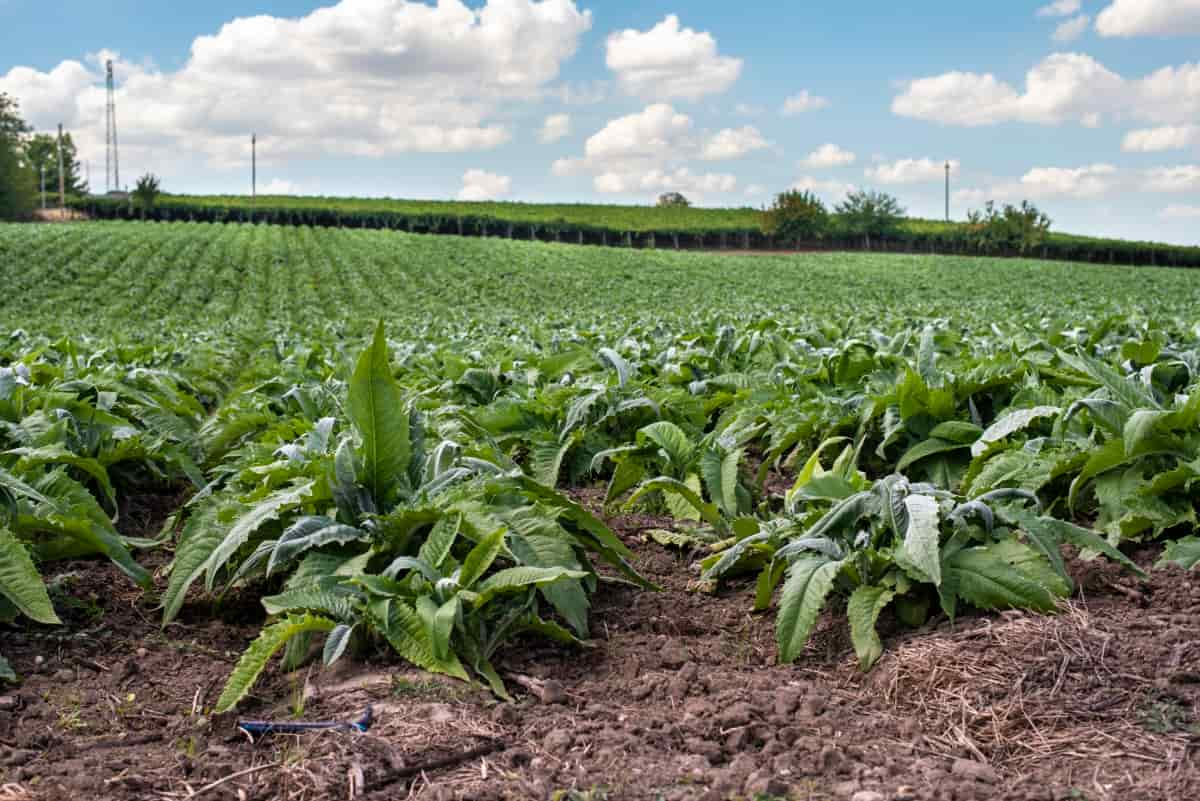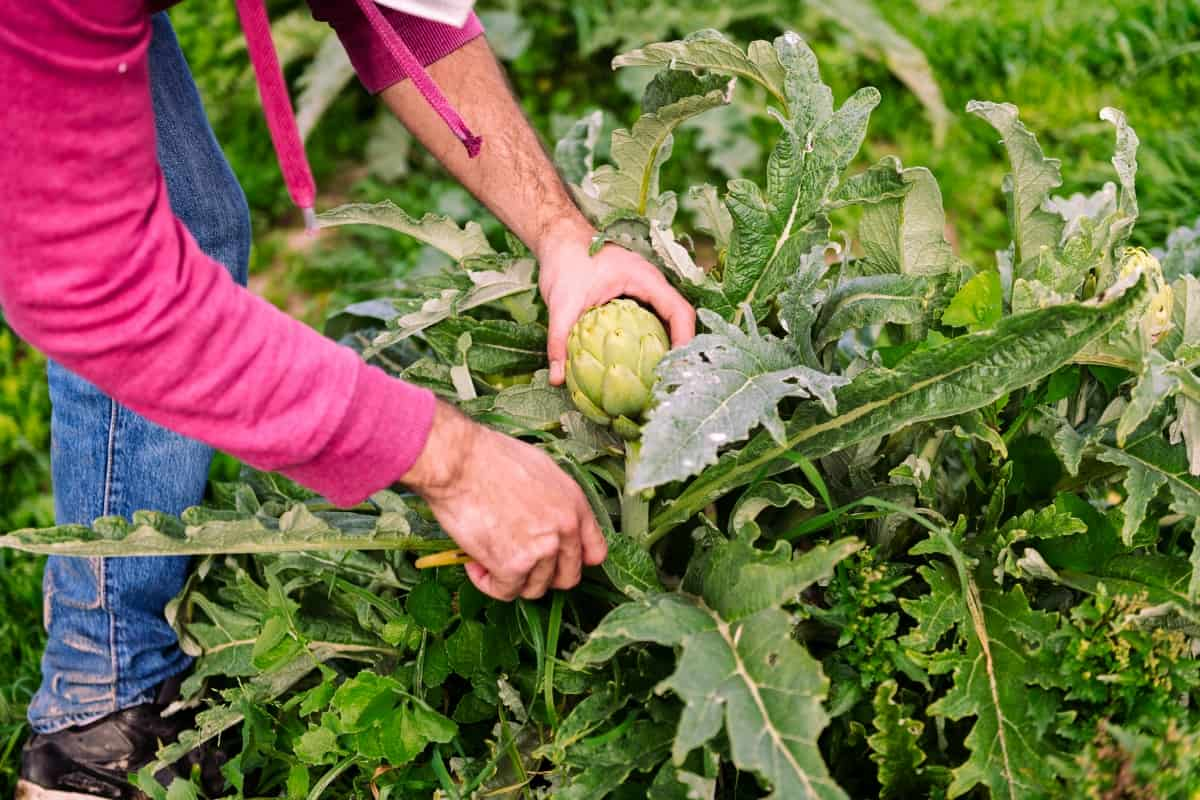Planting Artichoke seeds or transplants allows for earlier harvests. When started indoors, seeds can be planted outdoors once the danger of frost has passed, giving them a head start on the growing season. Transplants are already established plants and will begin producing sooner than if you were to sow seeds in the ground directly.

How to Plant Artichoke Seeds
Understanding Artichoke Seeds and Transplants
Artichoke seeds are the product of pollination, resulting in genetic diversity. They can be purchased from seed suppliers or harvested from mature Artichoke plants. The advantage of starting with seeds is having control over the entire growth process, from germination to harvest. On the other hand, Artichoke transplants are young seedlings that have been started indoors or purchased from a nursery.
Transplants offer a head start to gardeners who want to skip the germination stage and begin with more established plants. Growing Artichokes from seeds requires patience, as they need extra care during germination and early growth stages. Both methods require proper care throughout their lifespan to ensure healthy and productive plants.
Choosing the Right Location for Planting Artichokes
Choosing the right location for planting Artichokes is crucial to ensure their healthy growth and abundant harvest. Artichokes thrive in full sun, so it’s essential to select a spot in your garden that receives at least six hours of direct sunlight each day. When considering the location, make sure there is enough space for the mature plants, as they can grow 4 feet tall and wide. It’s also important to choose an area that is sheltered from strong winds, as this can damage the delicate foliage.
Preparing the Soil for Artichoke Planting
Artichokes thrive in well-drained soil that is rich in organic matter. Before planting, it’s important to loosen the soil and remove any weeds or debris. Start by clearing the area where you plan to plant your Artichokes. Remove any rocks, sticks, or other obstructions that may hinder root growth.
Then, use a garden fork or tiller to break up the soil and improve its texture. Next, add compost or well-rotted manure to enrich the soil with nutrients. Once you have added organic matter, it’s time to test your soil’s pH level. Artichokes prefer slightly acidic to neutral soils with a pH range between 6.5 and 7.0.
Planting Artichoke Seeds: Step-By-Step Guide
- Prepare the soil – Start by choosing a well-draining location for your Artichoke plants. Loosen the soil and remove weeds or debris that may hinder growth.
- Sow the seeds – Sow 3-4 Artichoke seeds per 8-10 square inch area, about ¼ inch deep into the soil. Space them evenly to ensure proper growth.
- Provide warmth and darkness – Cover the sown area with a dark cloth or plastic bag to keep it warm and shielded from light until germination occurs in about 20 to 25 days.
- Transplant seedlings – If you start your Artichoke seeds indoors, transplant them outdoors after two weeks from the last frost date in your region.
- Water regularly – Once your seedlings emerge, water them regularly, but avoid overwatering the plant, as this can cause root rot.
- Fertilize appropriately – Apply a balanced fertilizer every four weeks during the growing season to provide healthy plant development.
- Protect against pests and diseases – Monitor your plants for signs of pests such as aphids or snails, and take appropriate measures like using organic insecticides if necessary.
In case you missed it: 10 Common Problems With Artichoke Plants: Treatment and Solutions

Caring for Artichoke Seedlings
Once your Artichoke seeds have germinated and the seedlings have emerged, it’s time to shift your focus to their care. This crucial stage will determine the success of your plants in the long run. Ensure that your seedlings receive ample sunlight. Watering is another important aspect of caring for Artichoke seedlings. Keep the soil moist but not soggy. As the seedlings grow, thin them out by removing weaker ones from each planting area, leaving only one or two strong plants.
This will give enough space for healthy growth and reduce competition among plants. Apply a balanced organic fertilizer once every four weeks during the growing season. This will supply essential nutrients needed for robust growth and yield. Regularly inspect your Artichoke seedlings for any signs of pests such as aphids or snails.
Watering and Fertilizing Artichoke Plants
These plants require regular watering, especially during dry spells or hot summer months. Adequate moisture is essential for the development of large, tender Artichokes. Aim for deep, thorough irrigation that reaches the root zone but allows the soil to dry out slightly between waterings.
Fertilizing Artichoke plants is equally important for optimal growth. During the growing season, feed your Artichokes with a balanced fertilizer every four weeks. Keep an eye on nutrient deficiencies by monitoring leaf color and overall plant health. Yellow leaves indicate a lack of nitrogen, while purple discoloration could be a sign of phosphorus deficiency. Adjust your fertilizer application accordingly to meet their nutritional needs.
Protecting Artichoke Plants from Pests and Diseases
These plants are not immune to common garden invaders, so taking preventive measures is essential. Keep an eye out for aphids, which love to feast on the tender leaves of Artichokes. To deter these pesky insects, you can spray plants with dish soap and water mixture or use insecticidal soap. Another pest is the Artichoke plume moth. This small grayish-brown moth lays its eggs on the underside of leaves. Handpicking affected leaves or using organic pesticides specifically formulated for caterpillars can help keep this pest at bay.
Fungal diseases can also affect Artichokes. To prevent this issue, ensure proper air circulation around your plants by spacing them adequately apart during planting. Regularly inspect Artichoke plants for any signs of disease or pest infestations – early detection is key in preventing further spread.
Harvesting and Storing Artichokes
The key is to wait until the flower bud reaches its full size but before it starts opening up. You can tell that the bud is ready by gently squeezing it – if it feels firm and tight, then it’s good to go. To harvest the Artichoke, use a sharp knife or shears to cut the stem about 1 inch below the base of the bud. Be careful not to damage any neighboring buds or leaves in the process. Once harvested, Artichokes should be stored properly to maintain their freshness. It’s best to refrigerate them as soon as possible after harvesting.
In case you missed it: How to Grow Artichoke in a Greenhouse: A Step-By-Step Guide for Seed to Harvest

Troubleshooting Common Issues in Artichoke Cultivation
Frost damage: Artichokes are sensitive to frost, so if you live in colder regions, make sure to protect your plants during freezing temperatures. Cover them with blankets or use horticultural fleece to insulate them from the cold.
Overcrowding: If you notice that your Artichoke plants aren’t producing as many buds as expected, it could be due to overcrowding. Thin out crowded areas by removing excess shoots or transplanting some seedlings elsewhere.
Improper watering: Artichokes need regular water but should not sit in wet soil for extended periods as this can affect root rot disease. Water deeply once or twice a week rather than shallowly every day.
Frequently Asked Questions (FAQ) on Artichoke Cultivation
Do Artichokes Require Full Sun or Partial Shade?
Artichokes thrive in full sun, so make sure to select a location in your garden that receives 6 to 8 hours of sunlight. While they can tolerate some shade, it may affect their growth and productivity.
When is the Best Time to Plant Artichoke Seeds or Transplants?
The ideal time to plant Artichoke seeds is in late winter or early spring, while transplants can be planted in early spring once the danger of frost has passed.
Can I Directly Sow Artichoke Seeds Outdoors?
It’s possible but less reliable than starting them indoors since they require consistent moisture during germination.
In case you missed it: How to Grow and Care for Artichokes in Containers/Pots

Conclusion
Artichokes are not only delicious but also packed with nutrients like fiber and antioxidants. Seeds allow you more control over the entire growing process, while transplants offer a head start by being pre-grown seedlings ready for transplantation into the ground. By starting your Artichoke from seeds or purchasing healthy transplants, you have more control over the quality and variety of your Artichoke plants.
- Feed Your Flock for Less: Top 10 Tips to Save on Chicken Feed
- Ultimate Guide to Ossabaw Island Hog: Breeding, Raising, Diet, and Care
- Hatching Answers: The Top 10 Reasons Your Chickens Aren’t Laying Eggs
- Eggs and Economics: Breaking Down the Cost of Raising Backyard Chickens
- Defend Your Greens: Proven Methods to Keep Iguanas Out of Your Garden
- Ultimate Guide to Cinnamon Queen Chicken: A Comprehensive Guide for Beginners
- Ultimate Guide to California Tan Chicken: Breeding, Raising, Diet, Egg-Production and Care
- Ultimate Guide to Marsh Daisy Chicken: Breeding, Raising, Diet, and Care
- 10 Types of Chicken Farming Businesses You Can Start for Profits